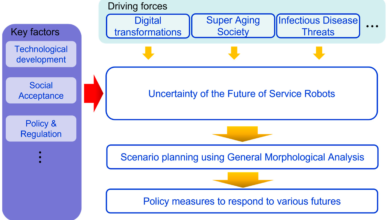What Is Streaming Ingestion and Why Should You Care?

In today’s data-driven world, the ability to process and analyze data in real time is a game-changer for businesses across industries. Streaming ingestion is at the heart of this transformation, enabling organizations to capture, process, and act upon data as it flows into their systems. But what exactly is streaming ingestion, and why is it becoming increasingly vital for businesses aiming to stay competitive and responsive in an ever-evolving market?
Understanding Streaming Ingestion
Definition and Core Concepts
Streaming ingestion refers to the continuous process of collecting and transporting data from various sources in real-time or near real-time to a data processing system. Unlike batch processing, where data is collected over a period and then processed in bulk, streaming ingestion handles data as it arrives, allowing for immediate analysis and action.
At its core, streaming ingestion involves:
- Data Sources: These can include IoT devices, social media feeds, transaction systems, logs, and more.
- Data Transport: Efficient mechanisms to move data from sources to processing systems, often using technologies like Apache Kafka, AWS Kinesis, or Google Pub/Sub.
- Data Processing: Real-time analysis, transformation, and storage of incoming data using stream processing frameworks like Apache Flink, Spark Streaming, or Storm.
- Data Storage: Storing processed data in data lakes, databases, or other storage solutions for further analysis and reporting.
Key Components of Streaming Ingestion
- Producers: Entities that generate and send data into the streaming system. This could be sensors in an IoT network, user interactions on a website, or financial transactions in a trading platform.
- Message Brokers: Systems that handle the ingestion and transportation of data streams. They ensure data is reliably delivered from producers to consumers.
- Consumers: Applications or services that receive, process, and utilize the ingested data in real-time.
- Stream Processing Engines: Tools that enable real-time processing, filtering, aggregation, and analysis of data streams.
Benefits of Streaming Ingestion
- Real-Time Insights: Immediate access to data allows businesses to make timely decisions, respond to events as they happen, and gain competitive advantages.
- Improved Operational Efficiency: Automating data processing reduces manual intervention, minimizes errors, and enhances the overall efficiency of operations.
- Enhanced Customer Experiences: Real-time data enables personalized interactions, proactive customer service, and seamless user experiences.
- Scalability and Flexibility: Streaming ingestion systems can handle vast amounts of data from diverse sources, making them suitable for organizations of all sizes.
Why Streaming Ingestion Matters
The Shift Towards Real-Time Data
In the past, businesses relied heavily on historical data and batch processing to derive insights. While useful, this approach often resulted in delayed decision-making, as valuable opportunities or issues could emerge between data collection and analysis. Streaming ingestion changes the game by providing a continuous flow of data, enabling:
- Immediate Action: Detect anomalies, trigger alerts, and initiate corrective measures without delay.
- Dynamic Decision-Making: Adapt strategies based on the latest data trends and patterns.
- Enhanced Predictive Capabilities: Utilize real-time data to improve forecasting models and predictive analytics.
Applications Across Industries
Streaming ingestion is not limited to a single industry; its applications span various sectors, each benefiting uniquely from real-time data processing:
- Finance: Enables real-time trading, fraud detection, and risk management by processing transactions and market data as they occur.
- Healthcare: Facilitates real-time patient monitoring, predictive diagnostics, and timely interventions by ingesting data from medical devices and health records.
- Retail: Enhances inventory management, personalized marketing, and customer service by analyzing shopping behaviors and sales data instantly.
- Manufacturing: Optimizes production processes, predictive maintenance, and supply chain management by monitoring machinery and logistics data in real-time.
- Telecommunications: Improves network performance, customer service, and usage analytics by processing call data and network traffic on the fly.
Competitive Advantage through Real-Time Data
Organizations leveraging streaming ingestion gain a significant edge by:
- Responding Quickly to Market Changes: Real-time data allows businesses to swiftly adjust their strategies in response to market dynamics, consumer behavior shifts, or emerging trends.
- Innovating Continuously: Access to up-to-date data supports innovation, enabling the development of new products, services, and business models that meet current demands.
- Optimizing Resources: Real-time monitoring and analysis help in the efficient allocation and utilization of resources, reducing waste and increasing productivity.
The Technical Landscape of Streaming Ingestion
Core Technologies and Tools
Implementing a robust streaming ingestion system requires a combination of various technologies and tools, each serving a specific function in the data pipeline:
- Message Brokers: Apache Kafka, AWS Kinesis, Google Pub/Sub, and RabbitMQ are popular choices for managing data streams.
- Stream Processing Frameworks: Apache Flink, Spark Streaming, Storm, and Samza enable real-time data processing and analysis.
- Data Storage Solutions: Data lakes (e.g., Amazon S3, Azure Data Lake), NoSQL databases (e.g., Cassandra, MongoDB), and time-series databases (e.g., InfluxDB) are commonly used to store processed data.
- Data Integration Tools: Tools like Apache NiFi and Talend help in integrating various data sources and ensuring smooth data flow within the system.
Architecture of a Streaming Ingestion System
A typical streaming ingestion system architecture includes:
- Data Producers: Devices or applications generating data in real-time.
- Message Broker: Collects and buffers incoming data streams.
- Stream Processing Layer: Processes data in real-time, performing transformations, aggregations, and analytics.
- Data Storage: Stores the processed data for further analysis and reporting.
- Consumer Applications: Applications that utilize the processed data for various purposes, such as dashboards, alerts, and automated actions.
Best Practices for Implementing Streaming Ingestion
- Scalability: Design the system to handle increasing volumes of data by leveraging distributed architectures and scalable cloud services.
- Reliability: Ensure data integrity and availability by implementing fault-tolerant systems and redundancy mechanisms.
- Latency Optimization: Minimize processing delays by optimizing the configuration of message brokers and stream processing engines.
- Data Quality: Implement validation, cleansing, and enrichment processes to maintain high data quality throughout the pipeline.
- Security: Protect data in transit and at rest through encryption, access controls, and secure communication protocols.
Challenges in Streaming Ingestion
Data Volume and Velocity
Handling large volumes of data at high speeds requires robust infrastructure and efficient processing capabilities. Scaling streaming ingestion systems to meet these demands without compromising performance can be challenging.
Data Variety
Streaming ingestion systems must accommodate diverse data types and formats from various sources. Ensuring compatibility and seamless integration across different data streams requires flexible and adaptable solutions.
Ensuring Data Quality
Maintaining data accuracy, consistency, and completeness in real-time is crucial for reliable analysis and decision-making. Implementing effective data validation and cleansing processes is essential.
Latency Management
Achieving low-latency data processing is vital for real-time applications. Balancing the need for speed with the complexity of data processing tasks can be difficult, requiring careful optimization of the entire data pipeline.
Security and Compliance
Protecting sensitive data and ensuring compliance with privacy regulations are critical aspects of streaming ingestion. Implementing comprehensive security measures and maintaining regulatory compliance adds complexity to the system.
Overcoming Challenges in Streaming Ingestion
Leveraging Scalable Cloud Solutions
Cloud platforms offer scalable infrastructure and managed services that can handle the demands of streaming ingestion. Services like AWS Kinesis, Google Pub/Sub, and Azure Event Hubs provide scalable and reliable message brokering, while cloud-based stream processing frameworks offer the flexibility needed to handle varying data loads.
Implementing Robust Data Governance
Effective data governance ensures that data is managed, stored, and used responsibly. Implementing policies and procedures for data quality, security, and compliance helps mitigate risks associated with data breaches and non-compliance.
Utilizing Advanced Analytics and AI
Incorporating advanced analytics and artificial intelligence can enhance the capabilities of streaming ingestion systems. Machine learning algorithms can help in real-time data analysis, anomaly detection, and predictive analytics, providing deeper insights and more informed decision-making.
Optimizing System Performance
Performance optimization involves fine-tuning the configurations of message brokers, stream processing engines, and data storage systems to reduce latency and improve throughput. Techniques like data partitioning, parallel processing, and efficient resource allocation are crucial for maintaining optimal performance.
Ensuring End-to-End Security
Implementing end-to-end security measures, including data encryption, secure communication protocols, and robust access controls, is essential for protecting data integrity and confidentiality in streaming ingestion systems.
The Future of Streaming Ingestion
Integration with Edge Computing
Edge computing brings data processing closer to the data sources, reducing latency and bandwidth usage. Integrating streaming ingestion with edge computing allows for real-time data processing and analytics at the source, enhancing the efficiency and responsiveness of the system.
Evolution of Stream Processing Frameworks
Stream processing frameworks are continuously evolving to offer more advanced features and capabilities. Future developments will likely focus on enhancing scalability, ease of use, and integration with other data management technologies, making streaming ingestion more accessible and effective for businesses of all sizes.
Enhanced AI and Machine Learning Integration
The integration of AI and machine learning with streaming ingestion systems will enable more sophisticated real-time analytics and decision-making. AI-driven insights can help businesses anticipate trends, detect anomalies, and optimize operations in real-time.
Growth of Real-Time Data Ecosystems
The ecosystem surrounding real-time data processing will continue to grow, with more tools, platforms, and services emerging to support streaming ingestion and real-time analytics needs
Enhanced Privacy and Security Measures
As data privacy concerns escalate, streaming ingestion systems will incorporate more advanced privacy and security measures, ensuring that real-time data processing complies with evolving regulations and protects sensitive information.
Greater Adoption Across Industries
While streaming ingestion is already prevalent in sectors like finance, healthcare, and e-commerce, its adoption will expand to other industries, including agriculture, energy, and logistics, driven by the need for real-time data insights.
Conclusion
Streaming ingestion is revolutionizing the way businesses collect, process, and utilize data, providing real-time insights that drive informed decision-making and operational efficiency. As organizations continue to navigate the complexities of the digital age, embracing streaming ingestion becomes essential for staying competitive and responsive to market dynamics.
By understanding the fundamentals of streaming ingestion, recognizing its importance, leveraging the right technologies, and addressing the associated challenges, businesses can harness the full potential of real-time data. Whether through enhancing customer experiences, optimizing operations, or gaining a competitive edge, streaming ingestion offers the tools and capabilities needed to thrive in an increasingly data-centric world.
Embracing streaming ingestion is not just a technical decision; it’s a strategic move towards building a more agile, informed, and customer-centric organization. As the landscape of data management continues to evolve, those who adopt and innovate with streaming ingestion will be well-positioned to lead and succeed in the future.





